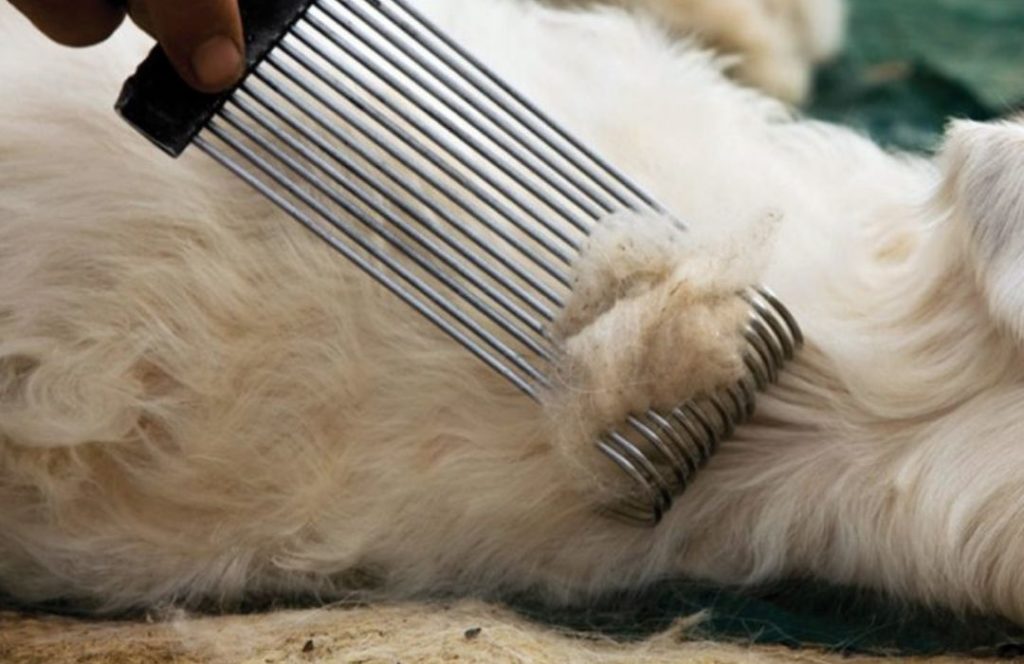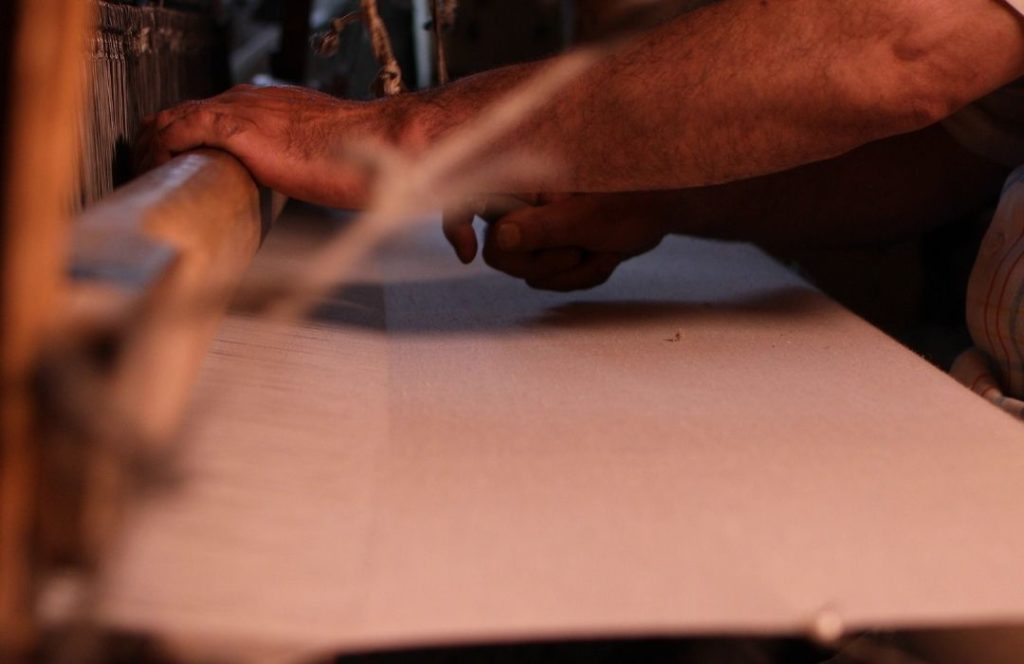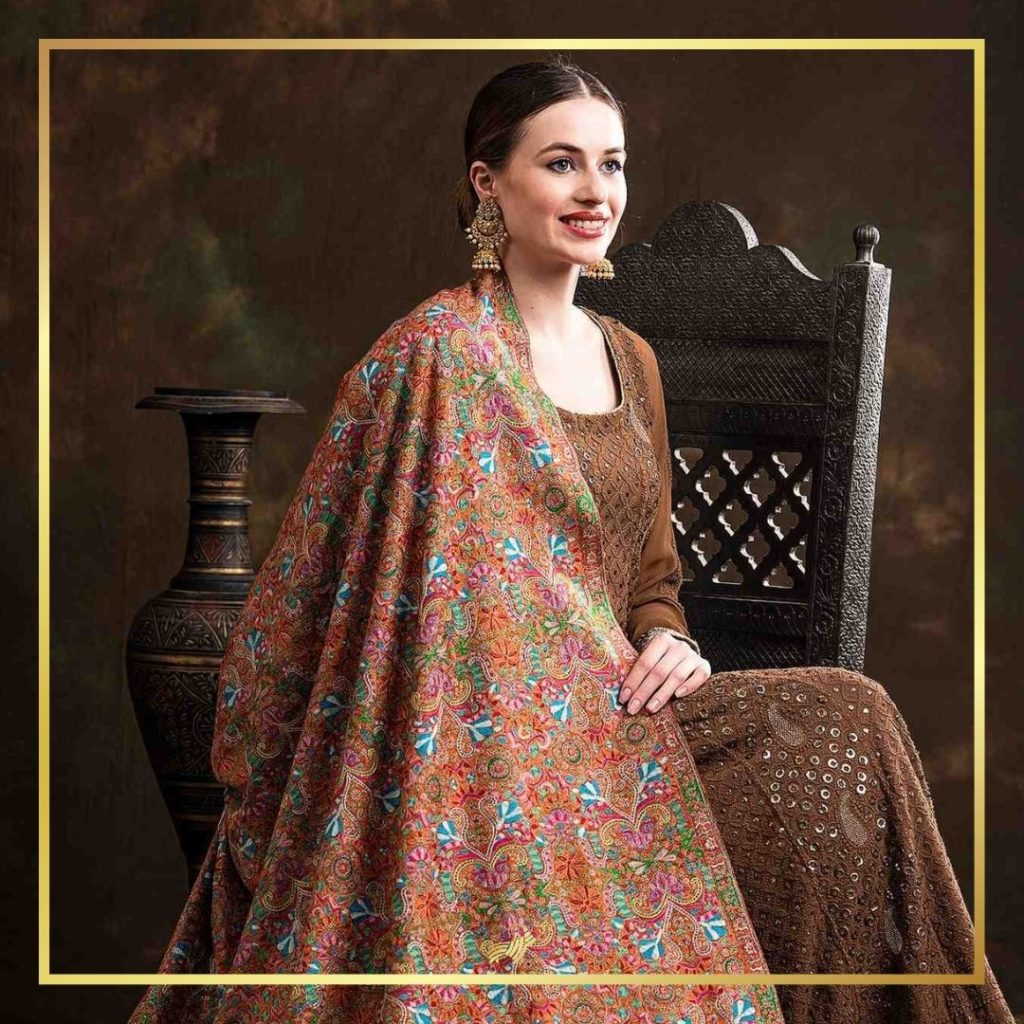While shawls have been worn as a necessity in the past, today, these are just fashion accessories that perk up plain outfits. In Kashmir, shawls mean those wraps that are used to keep warm. These are worn around the upper body and can be pulled over the head if temperature demands.
Shawls in Kashmir
Kashmiri shawls are used synonymously with Pashmina shawls. Pashmina shawls are made from Cashmere wool, which comes from Ladakh. Even though Kashmir produced other shawls too, which are crafted using other warm materials, it is just the Pashmina shawls that spread their charm across the world and swooned royals as well commoners.
In Kashmir, primarily three types of shawls are found. The most precious, fine, and warm is the Shahtoosh shawl. Shahtoosh wool is acquired from the Tibetan Antelope, which grows as a defense mechanism against the freezing climate. The wool is manually processed and converted to luxury shawls. Unfortunately, Shahtoosh shawls were banned back in the 1990s in Kashmir, as it gave rise to animal cruelty. The Tibetan antelope would be mercilessly killed for its wool.
The second type of shawls in Kashmir was the Pashmina shawls, which were processed from the downfibre of Cashmere goats. The goats are inhabitants of the Himalayas region around Ladakh and grow Cashmere wool. This wool is fine, soft, smooth, and extraordinarily warm. It is acquired from the goat by gently combing its body during the moulting season. This wool, too, is manually processed and converted to shawls. Pashmina shawls enjoy worldwide fame because neither are these made cruelly nor are they whoppingly expensive like Shatoosh.

The most commonly used shawls in Kashmir are the raffal shawls. Raffal shawls are made out of sheep wool, and are commonly used for casual purposes. These can be embroidered in the heaviest motifs, as they are durable and can take every harsh prick of the thickest needles well.
Also read: Pashmina goat farming and its impact on the economy
Pashmina of Kashmir
The world-famous Pashmina shawls of Kashmir are synonymously mentioned for Kashmiri Shawls. The raw material for Pashmina shawls comes from Ladakh, where the Changthangi goats grow it. The wool keeps the goat safe and helps it survive the winter temperature of minus 40 degrees C. This is how warm it is, even if it is super lightweight and fine.
As soon as Spring arrives, it begins the moulting period of the goat and it starts losing its hair. This is collected by the herders and sent to Kashmir for processing.

In Kashmir, womenfolk clean and hand-spin the wool. Spinning converts lumps of Cashmere wool to long and fine threads, which measure 12 to 16 microns in diameter. These are later handwoven by one or two men. After a few days, working for at least 8 hours a day, these weavers complete one Pashmina shawl.
Being manually processed, Pashmina shawls retain the finesse and smooth texture that is inherent to Cashmere wool. Pashmina shawls are warm, beautiful and timeless, and hence world famous. Europeans learned about the Kashmiri Shawl through Francis Berner who visited Kashmir in 1964 and wrote about the opulence and the softness of this shawl. Post this, these luxury pieces were exported in large quantities to Europe and many other nations of the world.
Kashmiri Shawls for Kashmir
For Kashmir, Pashmina did not only get prestige but a huge economic boost. The furor and passion for Pashmina in European nations began with Napoleon Bonaparte gifting his wife a Kashmiri shawl when he came back from an Egyptian campaign. This brought the love of Paris to Kashmir, as women from Paris ordered hundreds of Kashmiri shawls. It is believed that in the 19th century, Kashmiri shawls were used as wedding gifts in France and England.

Even though Kashmiri shawls had a great competition with the Iranian woven shawls, many attempts from weavers could not make a copy of the Kashmiri shawl. The real and original Kashmiri shawl was woven from pure Cashmere from Ladakh. It would be brought in a raw shape to Kashmir, and the artisan would magically transform it into luxury shawls and scarves. Some shawls were hand-embroidered in such an intricate and profuse fashion that they cost more than 100 pounds. The shawls were exported from Kashmir, most of the produce went to France. It is said that 80% of Kashmiri shawls were exported to France, 10% to the US, 5% to Italy, and the rest to other importing nations
Who introduced shawls in Kashmir?
It was in the 15th century when Kashmir was ruled by Mughals, that a Persian traveller visited the region. As he wandered around, spreading knowledge and religion, he came across the Cashmere goat in Ladakh. He ordered the herders to collect its wool, and get it processed. Artisans processed this wool and crafted a pair of socks for the then king - Zain ul Abideen.
The king was highly impressed with the quality, warmth, and finesse of these socks, and later ordered processing units of Cashmere wool to be set up in Kashmir. The Persian traveler was Mir Syed Ali Hamdani, and he brought with himself a team of craftsmen. These were 700 in total and trained the local artisans in a number of handicrafts. Among these crafts, Pashmina shawl making was preferred by the majority of the craftsmen, and hence began the perpetual handcrafting of Kashmiri shawls in Kashmir, and their export to nations worldwide. Europe was the largest exporter of Kashmiri shawls since the 18th century
The people of Kashmir owe the introduction of shawls in Kashmir to Mir Syed Ali Hamdani, and call him Shah E Hamdan popularly. Had he and King Zain ul Abideen together not put efforts into training the locals, perhaps the art would never have reached Kashmir, and the wool of the goat would have been a waste. But because of their conscious efforts and continuous endeavors, the quaint valley of Kashmir soon turned into a hub of handicrafts, and patrons all over the world visited this place to see Kashmiri shawls apart from other art forms that the artisans excelled in.
Also read: The Art of Weaving a Pashmina shawl